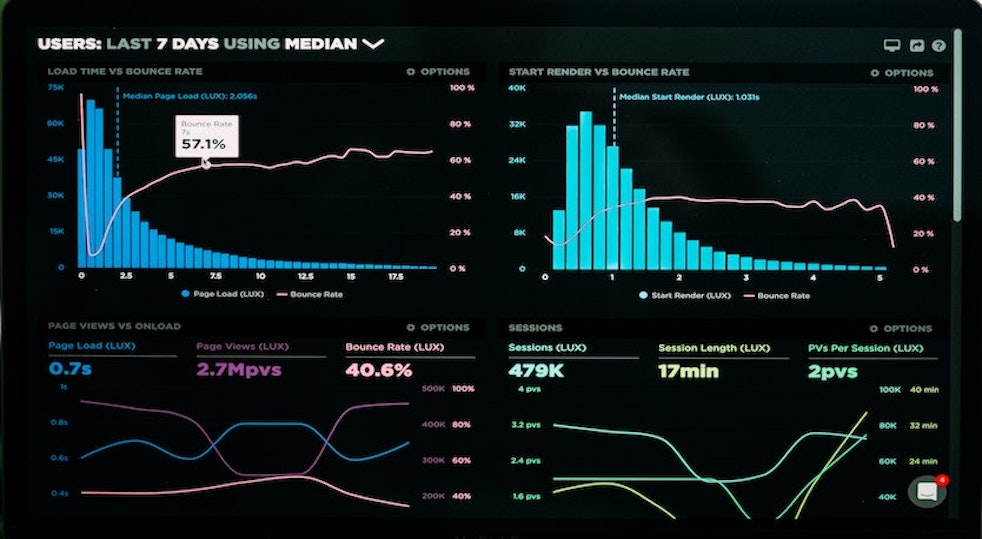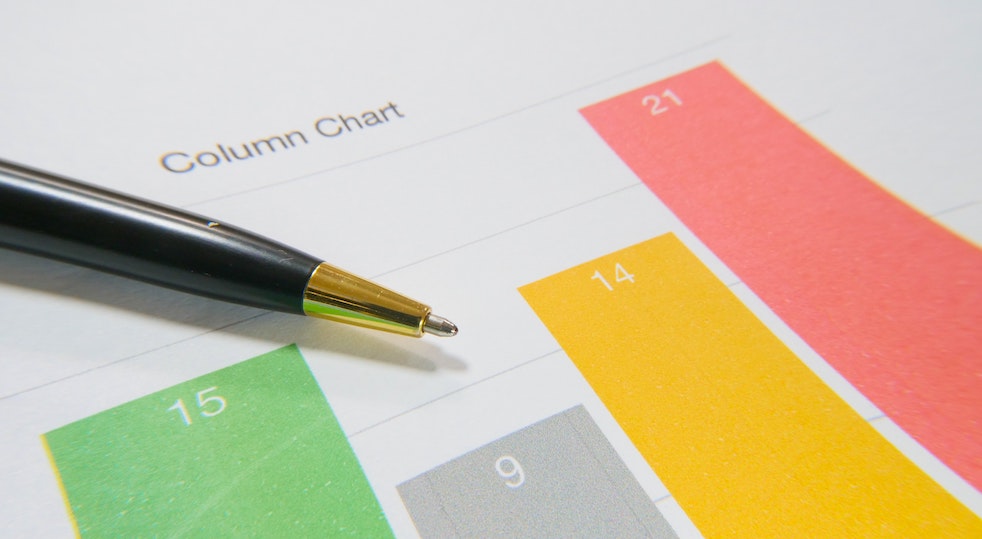To complement our series of QuickReads covering measurement, we will now explore the various data…

ChangeWise Quick Reads: Total Productive Maintenance (TPM) Part 1
In this Quick Read, we take a high-level look at Total Productive Maintenance (TPM). We explore where it comes from, what it is, and the benefits of using this popular Lean technique.
Where did TPM originate?
TPM originated in Japan, and was developed by Seiichi Nakajima based on the experience of the practical application of maintenance best practices between 1950 and 1970.
What is TPM in Lean Methodology?
Total Productive Maintenance is an approach to equipment maintenance that strives to achieve perfect production. It is centred around keeping all equipment in optimum working condition to prevent unnecessary delays and failure demand in business. It emphasises the importance of empowering frontline staff, encouraging them to take part in the initiative and partner with maintenance to create a culture of ownership for their equipment.
Total Maintenance
- Involve the whole maintenance system – from equipment manufacturer, to equipment engineering, to equipment user – to improve maintainability.
Total Participation – Everyone has a role
- Management to set direction and lead
- Staff areas to support
- Maintenance to maintain and train
- Operators apply new skills and new maintenance challenges

TPM is specifically aimed at companies who use a lot of machinery involving high maintenance costs.
The methodology is structured around 8 pillars that focus on proactive and preventive techniques for improving equipment reliability:
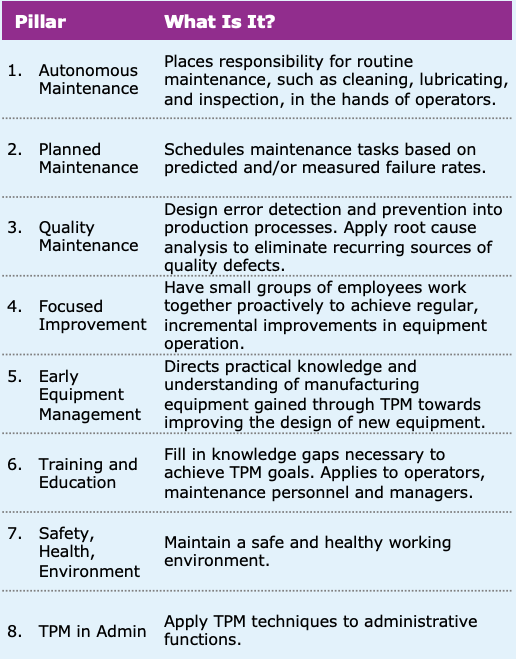
The goal is perfect production:
- No breakdowns and in-process adjustments
- No Small Stops or Slow Running
- No Defects
- Improved quality, speed and reliability
- Safe working environment; no accidents
The ultimate outcome is to ensure the Quality, Cost, and Delivery of a product are not impacted.
We will learn more about the 8 pillars in a future Quick Read.
Remember! TPM exercises are not effective when delivered as one-off workshops or events, this methodology involves a cultural shift and new way of thinking about maintenance and ownership. It is hugely successful when ingrained in an organisations CI culture.
What are the benefits of applying TPM?
When equipment breaks down, chaos ensues! And in a one piece/continuous flow mode, equipment breakdown is TOTAL chaos! There is also a significant impact on cost. TPM uses 6 main categories to identify equipment issues:
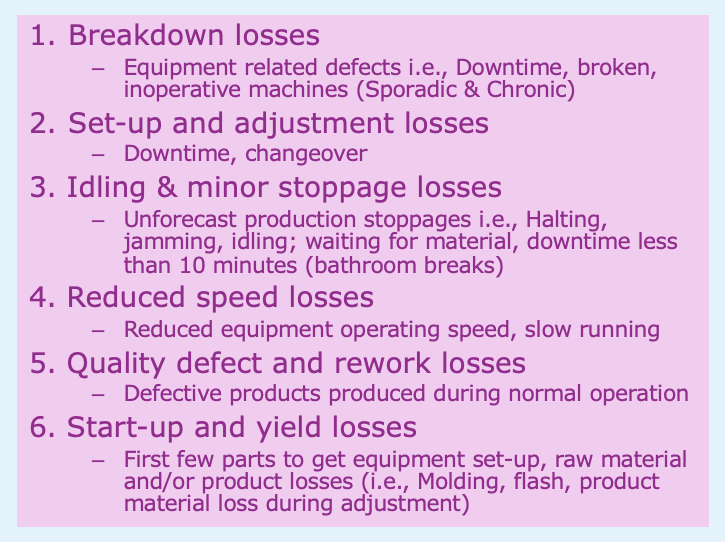
When utilised effectively, TPM can have measurable, lasting financial improvements:
Reduced Downtime:
Having proactive measures in place for maintenance activities will reduce downtime.
Defects are usually hidden deep within a machine, and they won’t show up until machinery is quite severely broken – resulting in downtime. Through empowering employees to take control of their processes and machinery, staff will be able to identify issues before they spiral out of control. TPM aims to resolve issues whilst they are still minor.
Increased Quality:
Staff proactively recognising issues and raising them will result in less rework, and ultimately improve customer satisfaction.
Cost Reduction:
TPM uses a measure called OEE (Overall Equipment Effectiveness) to measure losses in three critical elements:
- Availability
- Performance efficiency
- Quality rate
The idea is that as OEE increases, costs are reduced since increased productivity leads to reduced spending on equipment downtime and repairs.
Let’s revisit OEE in more detail in a future Quick Read
Improved Health & Safety:
An organised workspace with well-maintained equipment will result in fewer accidents, along with improved flow due to no missing equipment. This is why 5S Methodology is at the heart of TPM:
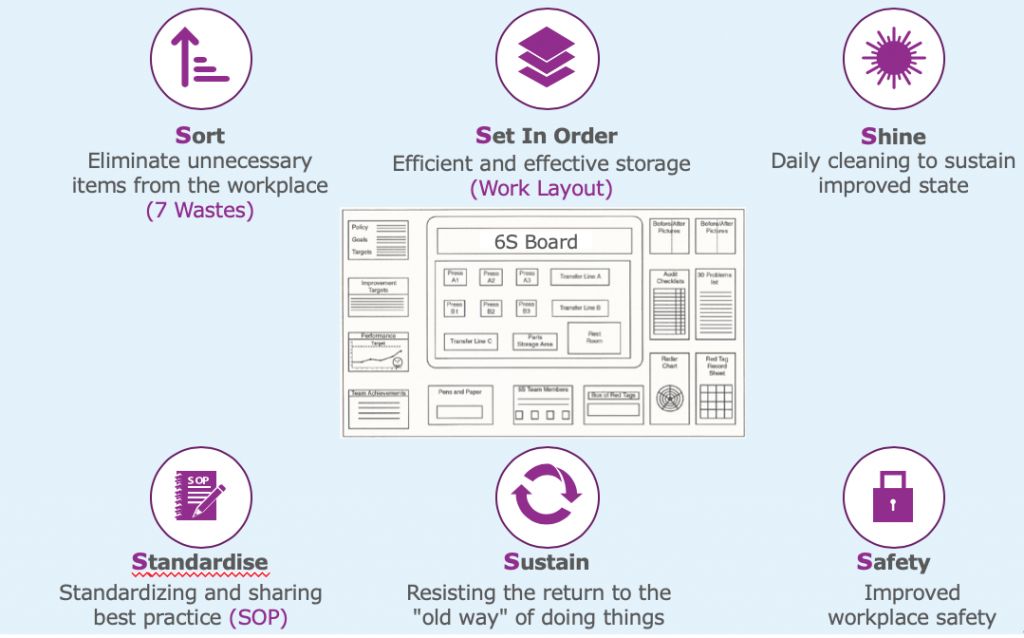
- Generates operator involvement
- A clean work area encourages clean work habits
- Removing clutter and disorganisation around machinery reduces premature failure
- A clean work area will more easily detect oil/fluid leaks, failing parts, premature belt wear, unusual noises/vibrations/heat sources etc.
- Increases employee morale and shift-to-shift teamwork
In Summary
TPM consists of 8 key pillars, with a 5S foundation. The ultimate goal is to ensure maximum equipment effectiveness and employee empowerment in order to support the Quality, Cost, and Delivery of a product.
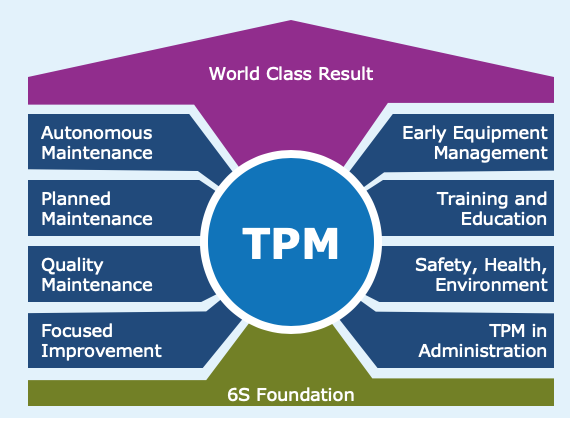
The idea is that employees treat the equipment like it is their own and only pass to maintenance for specialist reasons. It also improves teamwork and collaboration through ownership, reduces downtime, and saves your company money through avoidable repairs and replacements.
Interested in learning more about how TPM could help to improve your organisation? Contact us at info@changewise.co.uk
ChangeWise believes employee engagement is the foundation for successful Change. Training and coaching your people to use simple continuous improvement techniques will enable your organisation to continuously adapt and stay ahead in a constantly changing and challenging environment.
For updates and interesting Lean Change insights, connect with us on LinkedIn.
Find out more about our Public Training Courses

